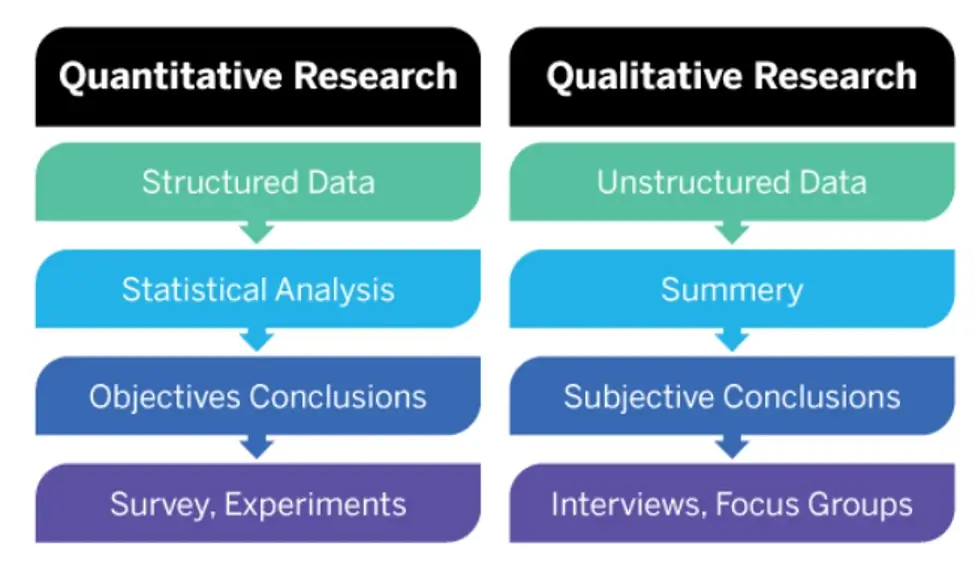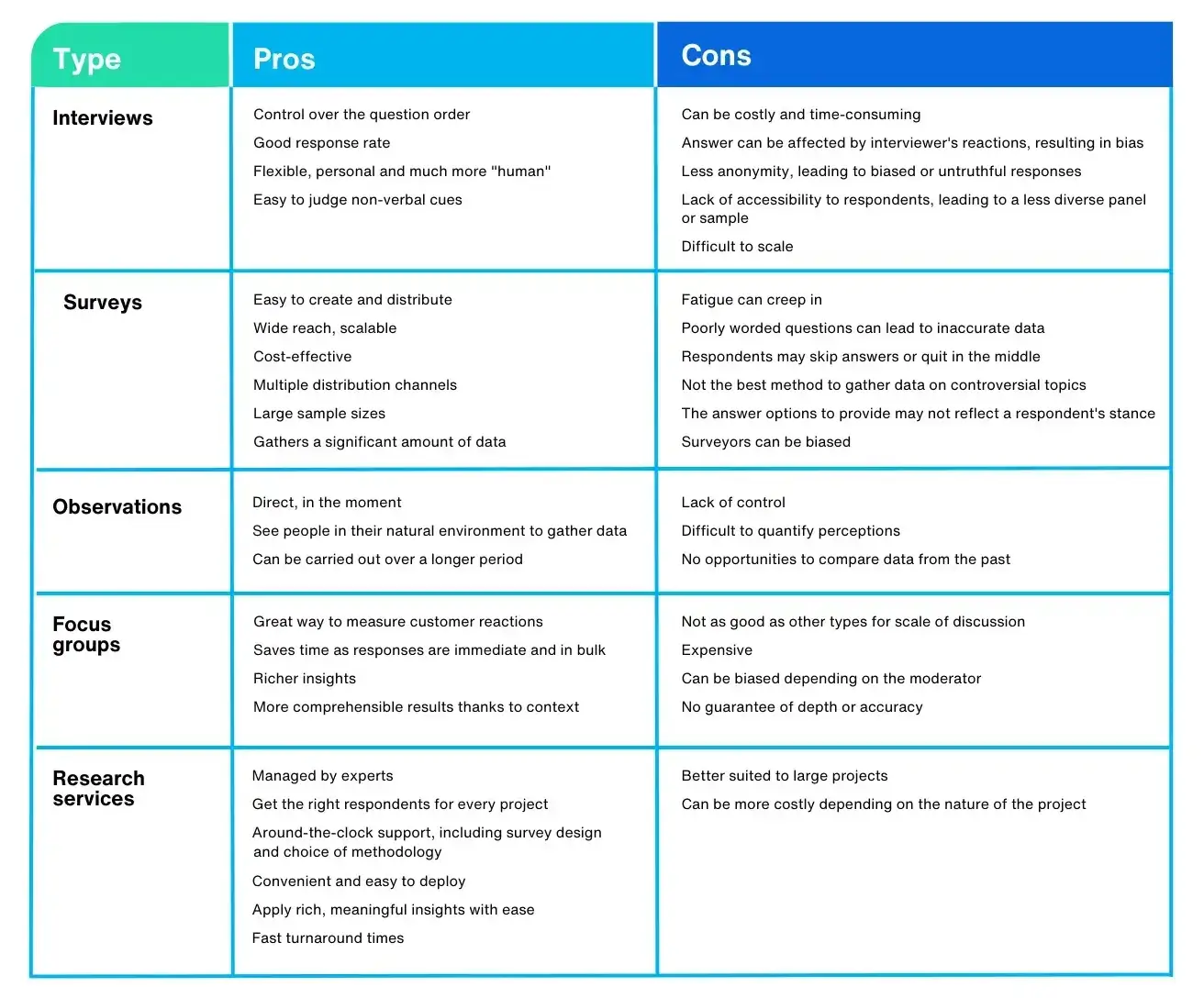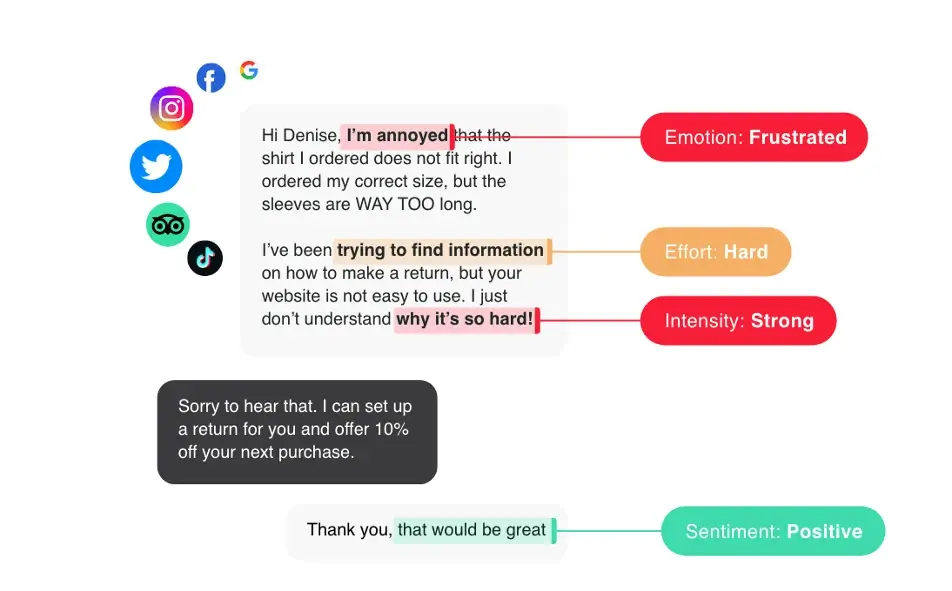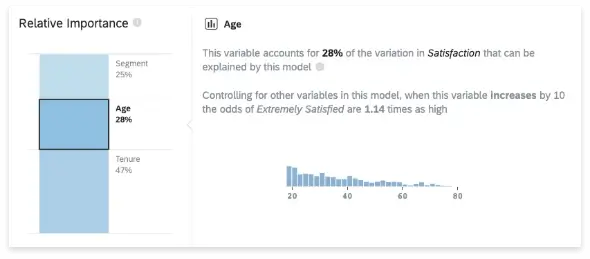Written by: Adam Bunker
Fact Checked by: Rank Zinni
What are marketing insights?
Marketing insights are observations you can make from collected datasets that businesses use to inform their marketing strategy. They’re actionable information that you can use to benefit your business.
These insights can come from a range of sources that fall into two main data types:
Quantitative data
For example, clickthrough rates, email open rates, website traffic, or demographic data
Qualitative data
This could be customer feedback, support emails, or messages on social channels

Marketing insights are an important part of any overall marketing strategy, as without insights you’ll find it hard to improve or meet your customers where they are. In other words: if raw data is a roadmap, then insights are your GPS.
For example, while you may know that your company’s product or service is unique, high-quality, and the best in its class, your target audience might not. To spread the word and push your offering to the forefront of potential customers’ minds, you’ll use a range of marketing techniques – but those techniques probably won’t land if they’re pulled together arbitrarily.
Insights, then, are how smart marketers shape their strategies; they use customer feedback, market data analysis, and channel-specific metrics to pull together marketing activations that they know will make an impact on their target demographic.
Free eBook: Quantitative and qualitative research design
Marketing insights vs Market insights
Marketing insights are observations drawn from and for marketing material, which specifically refers to campaigns and activations that fall under the marketing team’s banner. ‘Market insights’, on the other hand, refer to observations made from data about market conditions – like the economic climate and the size of a given industry.
Where things get complicated is that market insights can feed into marketing insights. For example, knowledge about a challenging economic climate might influence high-value brands to promote their lower-end products more prominently.
While the two terms are pretty similar, it’s a difference worth covering as in this piece we’ll just be focusing on marketing insights.
Why are marketing insights important?
Marketing insights are all about understanding your customers – who they are, what they like, what they don’t, what they’re looking for, and how well your marketing efforts are communicating that you can help them find it.
Specifically, making frequent efforts to gather marketing data and insights can help in a few key areas:
Influence customers
Marketing is all about influencing customers; it’s the art of taking an unknown product or service and slowly driving home the message that people need it. Marketing insights are the hammer for that particular nail – they’re data and feedback that can tell you exactly what kind of messaging will work best.
If, for example, you A/B test a round of marketing emails based on a set of hypotheses, you’ll gather insights on which email works best in terms of open and read rates, and which hypotheses are correct. Or you may learn that the majority of people following your social channels are aged 18-24. That would directly influence the kind of marketing activations you work on.
Meet demand
Insights you gather on customer behaviors, sales figures, and even socioeconomic factors can all help you design marketing campaigns that find and serve an explicit demand.
If you sell accountancy software, for instance, and you learn that most enterprise customers purchase or renew their software licenses in September, then you can upscale your marketing spend around that time of year to maximize impact. Doing that will help you appear to fill the demand exactly when it’s on the increase.
Shape products and services
Feedback from previous marketing campaigns can play a vital, company-wide role in shaping the future of your products or services. If you’re tracking customer sentiment and opinions across social media sites, for example, you might learn that there’s an explicit demand for a specific feature or product variant.
That kind of insight is absolute gold because it points to actual customer needs that can be better served going forwards.
How do you gather marketing insights?
Marketing insights can come from a host of different places. That’s because marketing strategies can be influenced by data and knowledge from a broad range of sources, from individual Tweets to large-scale socio-economic factors.
Here are a few places to start:
1. Customer feedback
Soliciting customer feedback can be one of the most powerful ways to gather marketing insight because you’ll be getting your information straight from the horse’s mouth, rather than having to extrapolate from data. Marketers regularly employ focus groups or conduct research in their segment to find out what customers think and what they engage with. Beyond this, customer surveys – like NPS and CSAT – are great for collecting customer sentiment that can help shape your marketing efforts.
Here are a few ways to gather useful qualitative feedback:

2. Social and support listening
Using a customer experience management suite that can scour everything from third-party review sites to social media posts, to customer support calls – and use natural language processing to understand what’s being said – is crucial if you want to understand how your marketing campaigns are landing.
These conversations are happening all the time – and at a huge scale – so it’s important to employ software that can aggregate all these data sources into actionable insight.
3. Digital analytics
Analytics suites can tell you how many people engaged with a digital campaign on social, who opened a marketing email, and how much traffic each section of your site receives. But to fully understand how successful your marketing efforts are, you’ll need to engage in some data science to find the stories in the numbers. Savvy marketers know how to use the right insight tools to uncover actions from raw statistics – and put what they learn to use in future campaigns.
Avoid assumptions and false conclusions
In 2009, a now-infamous study was published that showed a direct correlation between the number of ice creams being sold and homicide rates. So, do ice creams cause murders? Of course not; it’s a classic case of correlation being confused with causation. And it’s one worth remembering when digging into data sets – just because two things correlate, it doesn’t mean one is being affected by the other. AI-enabled software, like Qualtrics™ StatsIQ™, can help you sort one from the other.
Marketing insight examples
Here are a few examples of the kind of marketing insights that you might find and use to your advantage…
1. Focus group
If a software company runs a focus group and learns that the majority of consumers think that its platform would be too difficult for them to use, then that customer insight would drive two key actions: working to adjust the onboarding flow or UX of the app, and a marketing push about how straightforward its tools actually are.
2. Social activity
A company that is spreading itself thinly across every social channel uses its social listening and analytics suites to determine that posts on LinkedIn and Twitter get far more engagement than on any other. As such, they decide to adjust their publishing frequency to focus solely on those more prominent online channels.

3. Market trends
A leading drinks company learns through market research that, due to difficult economic circumstances, more and more consumers are choosing to stay at home each weekend. The insight here leads them to reduce ad spend on out-of-home advertising and pivot their upcoming campaigns to focus more on how the drink compliments a night in, rather than out.
4. A/B tested emails
A company has a hypothesis that emails with emojis in the subject line garner higher open rates. The marketing team decides to A/B test this, with two nearly identical emails. Ultimately, their hypothesis is correct, so they codify emoji use in marketing emails going forward.
How can you make the best use of marketing insights?
When you analyze data points for marketing insights, you can begin to build a solid marketing strategy. But in a broader company context, that insight might go to waste if you don’t answer a few key questions:
- How can you ensure the entire organization is aligned on the recommended actions?
- How can you get your insights to the right decision-makers?
- How can you integrate data and insights across business silos?
The right software can be a strong platform on which to tackle these questions, because the more automated and simple you can make the process, the more you can foster company-wide data integration and data democratization.
Ultimately, successful marketing insights – like any other kind – require three things: access to data from multiple sources, analytics that can make sense of that data, and humans with the ability to see the underlying narrative.
Qualtrics’ data and insights-driven tools can help to supercharge that human element by putting data-driven analytics into more hands, doing so at scale, and helping you along with the detective work needed to uncover the stories behind the numbers.
The more people in a business who can see not only the data you have access to but the actionable insights they suggest, the more chance it has that the organization will use them to its competitive market advantage.
Tools like Qualtrics’ Experience Management Platform™ and StatsIQ are egalitarian insights machines – they’re designed to be used by as many people in the business as possible, not just those with data science degrees.
Putting consumer insights from every part of the customer journey onto the desktops of multiple business stakeholders, and doing so quickly, is how you can unlock truly effective decision-making that unilaterally enhances the customer experience.
Free eBook: Quantitative and qualitative research design
